
Conference Recap: ExactTarget Connections '09
We don't talk about email marketing on the blog much, but any of you working in the internet marketing space (and that's likely all of you) probably know that it's still one of the most effective marketing channels out there.
We've been fortunate enough over the years to partner with ExactTarget for our email marketing services and as they've grown and improved their offerings they constantly make me feel terrible. Don't get me wrong, they're awesome, in fact they're too awesome. The stuff their system is capable of and the one-to-one, closed-loop strategies they evangelize are amazing and I feel terrible that I haven't been able to implement every concept they've thrown my way. Nonetheless, I'm a huge fan, so mozPal, all-around great guy, and ExactTarget VP of Marketing, Jeff Rohrs, invited me to attend Connections '09, ET's annual user conference in their hometown of Indianapolis last week.
Don't run away just yet. While Connections is theoretically designed as a user conference, I went in specifically with the outlook of a platform-agnostic email marketer in order to evaluate the content and value of the conference for you, dear reader. Yes, there was a fair amount of ExactTarget rah-rah, but bottom line: if you're interested in email marketing, there were great lessons to be learned (and awesome parties to attend) regardless of whether you actually use ET or not. Since interesting and actionable takeaways are what we all want to get out of conferences, let me take you through a rundown of the sessions I attended, as well as some of the things that garnered large, scribbled asterisks or frantic underlines in my notes (yeah, I'm an analog kid, I take notes with a pen and paper, do I lose my membership in the club?).
DAY 1
The first day was all about keynote presentations. I have to take a second to call out the production values of this seminar. The main ballroom where all of the keynotes were held was incredible. Giant screens everywhere, slick lighting and signage, multiple cameras to re-broadcast the speakers onto screens, lighted backdrops, the whole nine. I've been to a good handful of conferences from the tiny to the huge, and this was by far the slickest, most smoothly run, and most impressively produced I've ever seen (apparently coordinated by Seattle-area event firm HB Stubbs). All other search industry shows (SEOmoz included) should strive to meet the quality and attention to detail ET puts into Connections...seriously.
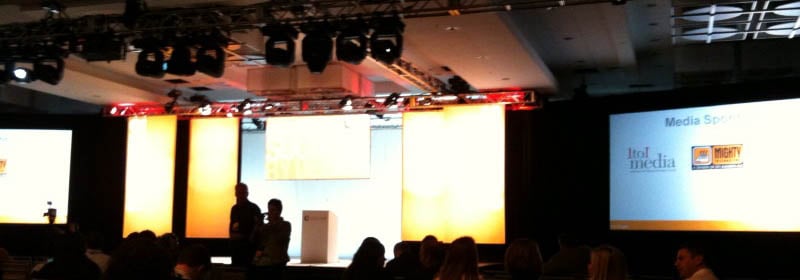
The main stage at Connections '09
Scott Dorsey, CEO & Scott McCorkle, COO ExactTarget
The ET C-suite kicked things off with a pleasant, though painfully scripted, welcome message. There were some cool feature announcements, but as I said, this is a platform agnostic event review, so I'll spare you the details. Scott Dorsey did drop some interesting statistics that I thought were quite impressive though:
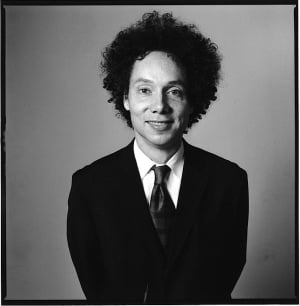
Talk about bringing out the big guns right away, the second speech of the entire event was sociologist and best-selling author Malcolm Gladwell, best know for his books The Tipping Point, Blink, and Outliers (Umm, did I mention everyone in attendance was given an autographed, hard-bound copy of Outliers in their swag bag? Slightly cooler than a t-shirt.).
Gladwell spoke about his findings in his latest book, Outliers, which studied the backgrounds of successful individuals, looking for patterns that determine success. He used the band Fleetwood Mac as his example for this presentation. Most people (myself included) think of Fleetwood Mac as a band that emerged out of nowhere in the 70's with their eponymous "debut" album, which they soon followed with Rumors, one of the most influential and best-selling albums of all time (OF ALL TIME!). Well, turns out we're all wrong. Fleetwood Mac started in 1967 and released 15 largely ignored albums under a kaleidoscope of various lineups before finding success in 1975 with Fleetwood Mac.
Turns out, in Gladwell's studies, this pattern is almost without exception. People considered successful experts in their field almost always exhibit 10,000 hours or more of study, practice, and dedication to their craft or skill-set before they reach success.
Great, Scott, but where's that valuable takeaway you promised?
In our world of the internet it can be all too easy to hold ourselves to impossible standards of overnight, instant success. What Gladwell's study shows is that we greatly underestimate the amount of time and effort that goes into success. There's little that's truly arbitrary or mysterious about success; it has a logic, a pattern, and a consistent architecture: it requires effort, hard work, and time. We put too much emphasis on "talent" and "luck" when, in reality, they're minor contributors. Expecting yourself to stumble upon that figurative lottery ticket is a lot of pressure to put on yourself and brings with it huge potential for disappointment. Isn't it more comforting to know that your success can be designed? Relax, even the Beatles spent their first several years playing as a cover band in a strip club in Hamburg, Germany...great things can come from humble beginnings, just give yourself a chance to put in the effort.
Kelly Mooney, CEO Resource Interactive
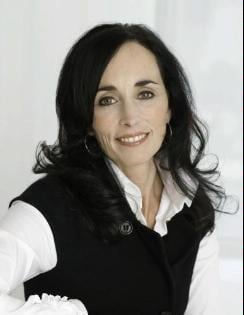
Author and CEO of Resource Interactive, Kelly Mooney, followed Gladwell with a presentation on her concept of the "O.P.E.N. Imperitive," her model for creating an open brand that engages with users on the social web. It's a very cool model to work from and one that I think can really help any company working to develop a social strategy. Her new book on the concept, The Open Brand, is probably worth a look.
Kelly's model creates a spectrum of online consumers (which she prefers to call iCitizens) ranging across two axes of producers to consumers, and those seeking anonymity to those seeking notoriety. How you approach, interact with, engage, and harness those customers changes depending on where they fall on the grid.
Some interesting points from her keynote:
At the end of the first day, a fleet (yes, fleet) of charter buses shuttled everyone to the beautiful Indianapolis Museum of Art for an elegant night of networking, food, and drink (they had a Scotch bar, for crying-out-loud, this is what I mean by attention to detail).
Day 2
The second day of the conference was full of breakout sessions divided between five different tracks.
"How to Develop an Effective 1-to-1 Marketing Strategy" - Strategy Track
Billed as a "how to" session on developing and implementing a segmented, targeted email marketing strategy, I was very excited about this session. Chris Murray from ExactTarget led off with a nicely bulleted framework for evaluating your company's current plan and setting goals for moving forward into a more advanced strategy. Chris definitely stressed the importance of making time for strategy before you start executing. I felt his approach was both practical and general enough that is can serve as a great jumping-off point for anybody looking to develop their marketing strategy for any vector, whether email or otherwise. Here's how he broke things down:
This design panel, featuring Tim Sinkola from ET, Bill McCloskey from Email Data Source, Mike Corack from Mighty Interactive, and Chad White from Smith-Harmon, looked at groups of emails from different brands and evaluated them for design and content. It was really interesting to look at welcome messages, newsletters, transactional mails, and more from major brands and get a chance to compare and contrast them with the input of some top-notch design pros. I'll quickly walk you through each category of email that was examined and give you the valuable take-aways for each:
"Research Survey Says" - Content Track
There are tons of market research studies out there, and it can be really difficult to divine the important bits of info from all of them. This session attempted to focus attention to some of the most relevant data related to email marketing from several recent studies to answer the questions: Is email dying? What are the real and perceived threats? Panelists Morgan Stewart from ET, Julie Katz from Forrester, Rebecca Lieb from eConsultancy, and Stefan Tornquist from Marketing Sherpa offered these insights:
That concluded sessions for Day 2 (there was one more in the middle of the day, but I had some other work to attend to). The day finished with an armada of chartered buses taking everyone to the Murat Theater for a hysterical comedy performance by Second City, followed by a They Might Be Giants concert! Again, the extravagance, detail, and execution of this event put even the biggest parties I've seen Google or Microsoft throw to shame.
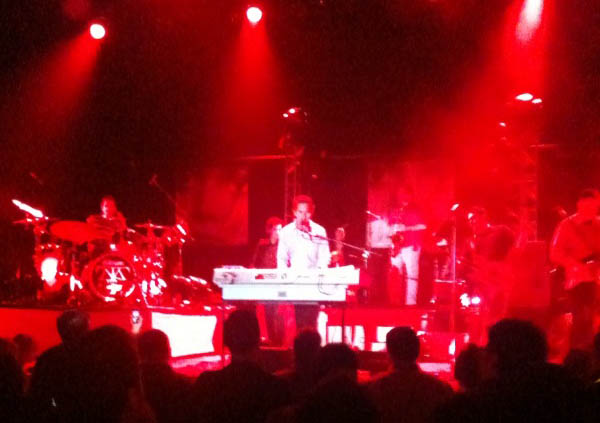
They Might Be Giants play Connections '09
DAY 3
The final day of the conference started off early for me as I joined five other folks bright-and-early for a small business discussion panel with several reps from ExactTarget. It was refreshing to hear how similar the problems were that we all faced, despite our businesses being very different. The ExactTarget reps were extremely receptive to our input and seemed to take even our most minor gripes very seriously. It was a fantastic opportunity for giving and gathering customer feedback, one I definitely hope to emulate at events we put on in the future.
"Extreme Makeover: Email Design Competition"
There were two major events scheduled for the closing hours of the event. First was the "Extreme Makeover: Email Design Competition" which pitted teams from ExactTarget, Mighty Interactive, and Smith-Harmon against each other to redesign emails for Pier 1 Imports, AAA, and Marketing Experiments. The redesigned emails were then tested against each other (and the original design) and evaluated based on several metrics appropriate for the campaign. The audience was also invited to vote via text for their favorite in each competition.
Unfortunately, I don't have images of the competing emails to show you, so my notes wouldn't make much sense. It was very cool, however, to see the different approaches these teams took to each email, and hear their reasoning behind it.
Mighty Interactive won the competition for the Pier 1 Imports email (ExactTarget was the audience pick). They stuck closest to the feel of the original Pier 1 design (which actually outperformed all of the re-designs!), which seems to indicate that Pier 1 customers are pretty set in their ways and reluctant to see content presented in a drastically different style.
ExactTarget won the competition for the AAA email (ET was also the audience pick) with an unorthodox, side-scrolling email. I was shocked considering the average age of AAA customers. I thought for sure the unusual navigation would cause confusion and poor results. Clearly I was wrong since they outperformed the control design by 26%!
Smith-Harmon won the competition for the Marketing Experiments email (S-H was also the audience pick) with their clean, colorful newsletter design. Their design outperformed the control by 26% in click-through rate, and reduced unsubscribes by 15.9%. Very solid performance by a cool little company from right here in Seattle.
Marlee Matlin
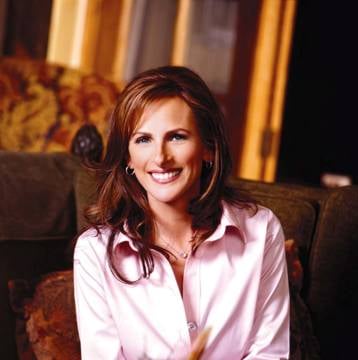
The conference closed with a final keynote by Academy Award-winning actress, producer, and author, Marlee Matlin, who also happens to deaf. Marlee, with the help of her interpreter, Jack, delivered a powerful and emotional speech about overcoming challenges, following your dreams, and designing your own success story. Alas, there aren't a lot of actionable business takeaways I can provide from her presentation, but I can tell you that her message of courage and strength is relevant to any business-person out there, especially the entrepreneurial spirits that populate the online marketing world.
Overall, I found Connections '09 to be an extremely impressive blend of useful, actionable information; thought-provoking and inspiring speakers; and superb networking events, all presented with world-class style and polish. As a first-time attendee, I was thoroughly, thoroughly impressed. Anyone who works with email marketing - even if you don't use ExactTarget - should absolutely look into attending next year. I'll almost certainly be there, and hopefully I'll have the chance to drag some more Mozzers along with me.
We've been fortunate enough over the years to partner with ExactTarget for our email marketing services and as they've grown and improved their offerings they constantly make me feel terrible. Don't get me wrong, they're awesome, in fact they're too awesome. The stuff their system is capable of and the one-to-one, closed-loop strategies they evangelize are amazing and I feel terrible that I haven't been able to implement every concept they've thrown my way. Nonetheless, I'm a huge fan, so mozPal, all-around great guy, and ExactTarget VP of Marketing, Jeff Rohrs, invited me to attend Connections '09, ET's annual user conference in their hometown of Indianapolis last week.
Don't run away just yet. While Connections is theoretically designed as a user conference, I went in specifically with the outlook of a platform-agnostic email marketer in order to evaluate the content and value of the conference for you, dear reader. Yes, there was a fair amount of ExactTarget rah-rah, but bottom line: if you're interested in email marketing, there were great lessons to be learned (and awesome parties to attend) regardless of whether you actually use ET or not. Since interesting and actionable takeaways are what we all want to get out of conferences, let me take you through a rundown of the sessions I attended, as well as some of the things that garnered large, scribbled asterisks or frantic underlines in my notes (yeah, I'm an analog kid, I take notes with a pen and paper, do I lose my membership in the club?).
DAY 1
The first day was all about keynote presentations. I have to take a second to call out the production values of this seminar. The main ballroom where all of the keynotes were held was incredible. Giant screens everywhere, slick lighting and signage, multiple cameras to re-broadcast the speakers onto screens, lighted backdrops, the whole nine. I've been to a good handful of conferences from the tiny to the huge, and this was by far the slickest, most smoothly run, and most impressively produced I've ever seen (apparently coordinated by Seattle-area event firm HB Stubbs). All other search industry shows (SEOmoz included) should strive to meet the quality and attention to detail ET puts into Connections...seriously.

The main stage at Connections '09
Scott Dorsey, CEO & Scott McCorkle, COO ExactTarget
The ET C-suite kicked things off with a pleasant, though painfully scripted, welcome message. There were some cool feature announcements, but as I said, this is a platform agnostic event review, so I'll spare you the details. Scott Dorsey did drop some interesting statistics that I thought were quite impressive though:
- ET clients send 2 billion emails every month.
- They create 1 billion new contacts and records every day.
- ET currently manages 100 Terabytes of data for their customers (that's 10x the Library of Congress)
- A study they conducted with Forrester showed that only 15% of consumers want all of their marketing communication through email.
- The same study also showed that, in general, consumers prefer email 300% over other delivery methods.

Talk about bringing out the big guns right away, the second speech of the entire event was sociologist and best-selling author Malcolm Gladwell, best know for his books The Tipping Point, Blink, and Outliers (Umm, did I mention everyone in attendance was given an autographed, hard-bound copy of Outliers in their swag bag? Slightly cooler than a t-shirt.).
Gladwell spoke about his findings in his latest book, Outliers, which studied the backgrounds of successful individuals, looking for patterns that determine success. He used the band Fleetwood Mac as his example for this presentation. Most people (myself included) think of Fleetwood Mac as a band that emerged out of nowhere in the 70's with their eponymous "debut" album, which they soon followed with Rumors, one of the most influential and best-selling albums of all time (OF ALL TIME!). Well, turns out we're all wrong. Fleetwood Mac started in 1967 and released 15 largely ignored albums under a kaleidoscope of various lineups before finding success in 1975 with Fleetwood Mac.
Turns out, in Gladwell's studies, this pattern is almost without exception. People considered successful experts in their field almost always exhibit 10,000 hours or more of study, practice, and dedication to their craft or skill-set before they reach success.
Great, Scott, but where's that valuable takeaway you promised?
In our world of the internet it can be all too easy to hold ourselves to impossible standards of overnight, instant success. What Gladwell's study shows is that we greatly underestimate the amount of time and effort that goes into success. There's little that's truly arbitrary or mysterious about success; it has a logic, a pattern, and a consistent architecture: it requires effort, hard work, and time. We put too much emphasis on "talent" and "luck" when, in reality, they're minor contributors. Expecting yourself to stumble upon that figurative lottery ticket is a lot of pressure to put on yourself and brings with it huge potential for disappointment. Isn't it more comforting to know that your success can be designed? Relax, even the Beatles spent their first several years playing as a cover band in a strip club in Hamburg, Germany...great things can come from humble beginnings, just give yourself a chance to put in the effort.
Kelly Mooney, CEO Resource Interactive

Author and CEO of Resource Interactive, Kelly Mooney, followed Gladwell with a presentation on her concept of the "O.P.E.N. Imperitive," her model for creating an open brand that engages with users on the social web. It's a very cool model to work from and one that I think can really help any company working to develop a social strategy. Her new book on the concept, The Open Brand, is probably worth a look.
Kelly's model creates a spectrum of online consumers (which she prefers to call iCitizens) ranging across two axes of producers to consumers, and those seeking anonymity to those seeking notoriety. How you approach, interact with, engage, and harness those customers changes depending on where they fall on the grid.
Some interesting points from her keynote:
- The passive web experience is dead, the new chief online behaviors are Creating, Influencing, and Sharing.
- The web is projected to influence 50% of offline sales by 2012.
- The new purchase funnel is non-linear, multi-channel, and digital first. Inital touchpoints can be upwards of 90, purchase options are vast, and there's a post-transaction consumer participation element.
- People spend 3.5 billion minutes on Facebook every day.
- There are over 18 million Twitter users in the US.
- 77% of shoppers use online research resources.
- Hulu streams have grown 6x year-over-year to 373 million.
At the end of the first day, a fleet (yes, fleet) of charter buses shuttled everyone to the beautiful Indianapolis Museum of Art for an elegant night of networking, food, and drink (they had a Scotch bar, for crying-out-loud, this is what I mean by attention to detail).
Day 2
The second day of the conference was full of breakout sessions divided between five different tracks.
"How to Develop an Effective 1-to-1 Marketing Strategy" - Strategy Track
Billed as a "how to" session on developing and implementing a segmented, targeted email marketing strategy, I was very excited about this session. Chris Murray from ExactTarget led off with a nicely bulleted framework for evaluating your company's current plan and setting goals for moving forward into a more advanced strategy. Chris definitely stressed the importance of making time for strategy before you start executing. I felt his approach was both practical and general enough that is can serve as a great jumping-off point for anybody looking to develop their marketing strategy for any vector, whether email or otherwise. Here's how he broke things down:
Start with a basic, three question Strategy Development FrameworkAfter Chris presented his excellent strategy framework, Dela Quist of Alchemy Worx took to the mic for a presentation he called "Fear & Self-Loathing in Email Marketing." While Dela's presentation didn't quite fit the "how to" billing of the session, it was incredibly interesting and provided lots of great takeaways. His primary message was that email marketers often get beat-up and made to feel guilty because they're all looked at as spammers (even though most aren't) and the key performance metrics of open rate and click-through rate for individual mail campaigns are grossly misleading in terms of measuring effectiveness. Dela can be a somewhat controversial guy, but I found him to be an engaging presenter and much of what he said really made me rethink how I want to formulate and evaluate elements of my email planning and strategy:
Step 1: Where are you now? Assessment. Analysis, and Auditing
- Where are you now?
- Where do you want to go?
- How will you get there?
Step 2: Where do you want to go? Setting Goals
- Evaluate list health (size, age, accuracy, engagement)
- Review past email performance metrics (open rate, click through, etc.)
- Review Deliverability metrics (important to know where you stand with major ISPs)
- Look at your existing customer data, insights, and segmentation. If you don't know much about your customers, you need to ask them, consider creating and incentivizing surveys.
- Perform competitive analysis. Look at what others are doing well and see how you can emulate or improve on it.
- Evaluate your available resources (budget, creative, technological, etc.)
Step 3: How will you get there? Devising your Strategy
- Determine what you want to achieve through your campaign(s):
- Brand Awareness
- Lead Generation
- Customer Retention/Activation
- Revenue Growth
- When setting your goals in any/all of these areas, be S.M.A.R.T. (be sure your goals are Specific, Measurable, Actionable, Realistic, and Timely).
Look End-to-End: It's critical to consider all of your marketing in terms of a 360-degree view of the customer lifecycle and devise your strategy with an overall, full-cycle approach in mind. For instance, you may want to consider where each piece of your strategy fits in terms of:
- Solidify segments and targets
- Decide which vehicle is best for each target (email, SMS, voice, etc.)
- Decide how best to attract targets (this helps drive touchpoints: in-store, on-site, via phone, etc.)
- Get their attention (evaluate and test creative, content, subject lines, etc.)
- Opt-In
- Welcome Approach
- Touch Points
- Preference Gathering
- Activation/Purchase
- Opt-Out/Down
- Re-Engagement
On how email is perceived:"Designed by Success" - Content Track
On how marketers can improve the way they think about email:
- Email marketing is the only channel consumers can turn off at will.
- On average, consumers sign up to receive email from 12 brands. With weekly contact, that's only 48 emails per month, which no reasonable person can consider "overload".
- If you bought every single commercial in the Super Bowl, you'd be seen as rich, cool, and clever; but if you send two emails a month, you're somehow a spammer and an idiot?!?
- The only pattern in email marketing is that most people don't open most emails.
- Numbers always go down over time when we look at opens and clicks. Looking at campaigns instead of people is a bad metric.
- Use Cumulative Unique Open Rate: What % of users opened at least one email over the last X months. This is a metric you can work to improve over time and it provides a better indicator of program performance.
- It's important to look at new subscribers and old subscribers differently.
- Do NOT try to emulate Amazon if you don't have thousands of products to serially convert with.
- Think of email as a brand mechanism, not just a direct response channel (-This really opened my eyes)
- There's an opportunity for nudge effect even w/ unopened email. People are highly engaged when doing email triage.
- Studies show that after sending an email, search volume usually goes up, and more unopened people end up converting passively than those that convert directly through the email.
- Users who open and click an email a week or two after it's sent convert much higher than those that open and click right away.
- Email is subtle and sophisticated, so stop using it like a sledgehammer.
This design panel, featuring Tim Sinkola from ET, Bill McCloskey from Email Data Source, Mike Corack from Mighty Interactive, and Chad White from Smith-Harmon, looked at groups of emails from different brands and evaluated them for design and content. It was really interesting to look at welcome messages, newsletters, transactional mails, and more from major brands and get a chance to compare and contrast them with the input of some top-notch design pros. I'll quickly walk you through each category of email that was examined and give you the valuable take-aways for each:
Welcome Emails:
Newsletters:
- These have the largest open rate, so spend time on them! Include good links, good offers, and brand yourself.
- Include a member ID, username, or password...something that will make people save the email to improve future deliverability.
- Strong calls-to-action (including social CTAs) can be very effective in welcome messages.
- Don't emulate your website nav in emails: they're two different animals. Keep email nav to <5 links.
Product-based Emails:
- Avoid huge hero images, they're usually blocked. Be sure to include a non-image CTA.
- Only 11% of subscribers scroll below the fold, so move offers and CTAs up the page.
- Think of images as supporting elements and make sure email renders well with and without images.
- Link people back to your site, they're going to convert on the site, not in your email.
- Social forward and interactivity can be hugely effective.
Offer Emails:
- Social sharing links (preferably top-right) can be fantastic.
- Explain the value of your CTA and justification for social sharing.
- Use personalization selectively, there's falloff if you go overboard.
Transactional Messages:
- Use what you know about customers to craft relevant offers for them.
- Including a barcode in an email offer can improve conversion attribution for brick-and-mortar businesses.
- Promote sales offers with text, aspirational branding with images.
- Maintain a consistent look and feel across all transactional emails.
- Include cross-sell opportunities if/when appropriate for the customer.
- When including promotional materials, limit it to no more than 20% of the email content, and make sure transactional info is top-left for prominence.
"Research Survey Says" - Content Track
There are tons of market research studies out there, and it can be really difficult to divine the important bits of info from all of them. This session attempted to focus attention to some of the most relevant data related to email marketing from several recent studies to answer the questions: Is email dying? What are the real and perceived threats? Panelists Morgan Stewart from ET, Julie Katz from Forrester, Rebecca Lieb from eConsultancy, and Stefan Tornquist from Marketing Sherpa offered these insights:
- Marketers love the idea of mobile and social, but they're not hurting email.
- Among consumers, email does have slowing growth, but also the lowest falloff among social, text, and IM.
- Teens may not perceive themselves as using email, but most have email accounts and they use them actively once they get to college-age.
- Email and SEO rank highest among marketers for happiness with ROI (well above PPC, Social, Mobile, and Display).
- Email is so easy and cheap, that it can be used ineffectively and still get results - and that's a problem.
- 72% of marketers say they could be using email better!
- 42% of marketers don't know their ROI from Email.
- The top two reasons (by far) customers unsubscribe: 1) Emails aren't relevant to them. 2) Received too many emails from sender.
- Consumers overwhelmingly demonstrate that they now demand greater control of email frequency, content, and easy unsubscribe/preference controls.
That concluded sessions for Day 2 (there was one more in the middle of the day, but I had some other work to attend to). The day finished with an armada of chartered buses taking everyone to the Murat Theater for a hysterical comedy performance by Second City, followed by a They Might Be Giants concert! Again, the extravagance, detail, and execution of this event put even the biggest parties I've seen Google or Microsoft throw to shame.

They Might Be Giants play Connections '09
DAY 3
The final day of the conference started off early for me as I joined five other folks bright-and-early for a small business discussion panel with several reps from ExactTarget. It was refreshing to hear how similar the problems were that we all faced, despite our businesses being very different. The ExactTarget reps were extremely receptive to our input and seemed to take even our most minor gripes very seriously. It was a fantastic opportunity for giving and gathering customer feedback, one I definitely hope to emulate at events we put on in the future.
"Extreme Makeover: Email Design Competition"
There were two major events scheduled for the closing hours of the event. First was the "Extreme Makeover: Email Design Competition" which pitted teams from ExactTarget, Mighty Interactive, and Smith-Harmon against each other to redesign emails for Pier 1 Imports, AAA, and Marketing Experiments. The redesigned emails were then tested against each other (and the original design) and evaluated based on several metrics appropriate for the campaign. The audience was also invited to vote via text for their favorite in each competition.
Unfortunately, I don't have images of the competing emails to show you, so my notes wouldn't make much sense. It was very cool, however, to see the different approaches these teams took to each email, and hear their reasoning behind it.
Mighty Interactive won the competition for the Pier 1 Imports email (ExactTarget was the audience pick). They stuck closest to the feel of the original Pier 1 design (which actually outperformed all of the re-designs!), which seems to indicate that Pier 1 customers are pretty set in their ways and reluctant to see content presented in a drastically different style.
ExactTarget won the competition for the AAA email (ET was also the audience pick) with an unorthodox, side-scrolling email. I was shocked considering the average age of AAA customers. I thought for sure the unusual navigation would cause confusion and poor results. Clearly I was wrong since they outperformed the control design by 26%!
Smith-Harmon won the competition for the Marketing Experiments email (S-H was also the audience pick) with their clean, colorful newsletter design. Their design outperformed the control by 26% in click-through rate, and reduced unsubscribes by 15.9%. Very solid performance by a cool little company from right here in Seattle.
Marlee Matlin

The conference closed with a final keynote by Academy Award-winning actress, producer, and author, Marlee Matlin, who also happens to deaf. Marlee, with the help of her interpreter, Jack, delivered a powerful and emotional speech about overcoming challenges, following your dreams, and designing your own success story. Alas, there aren't a lot of actionable business takeaways I can provide from her presentation, but I can tell you that her message of courage and strength is relevant to any business-person out there, especially the entrepreneurial spirits that populate the online marketing world.
Overall, I found Connections '09 to be an extremely impressive blend of useful, actionable information; thought-provoking and inspiring speakers; and superb networking events, all presented with world-class style and polish. As a first-time attendee, I was thoroughly, thoroughly impressed. Anyone who works with email marketing - even if you don't use ExactTarget - should absolutely look into attending next year. I'll almost certainly be there, and hopefully I'll have the chance to drag some more Mozzers along with me.
The author's views are entirely their own (excluding the unlikely event of hypnosis) and may not always reflect the views of Moz.




Comments
Please keep your comments TAGFEE by following the community etiquette
Comments are closed. Got a burning question? Head to our Q&A section to start a new conversation.